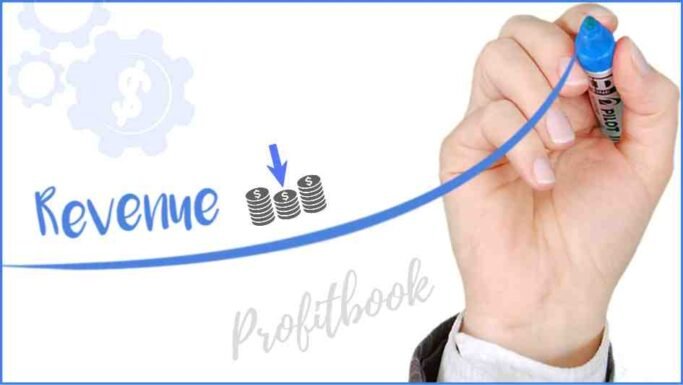
The balance sheet will show a gross fixed assets value, a contra account value for accumulated depreciation, and a net value. All three values can be useful for investors depending on what they’re looking for. A contra account is a negative account that is netted from the balance of another account on the balance sheet. The two most common contra accounts are the allowance for doubtful accounts/bad debt reserve, which is subtracted from accounts receivable, and accumulated depreciation, which is subtracted from fixed assets.
Types of Contra Accounts for Revenues
The contra asset account Accumulated Depreciation is deducted from the related Capital Assets to present the net balance on the parent account in a company’s balance sheet. Understanding how contra revenue accounts impact financial ratios is essential for assessing a company’s financial health. These accounts play a pivotal role in shaping key financial metrics that investors and management use to evaluate performance. The first step in setting up a contra revenue account is creating the account within your accounting software. Look for an option to add a new account, and make sure to label it clearly as a contra revenue account.
What Is the Difference Between an Inventory Write-Off & Inventory Reserve?
Most accounts receivable would just be the time between purchase and credit card settlement. Revenue is shown on the income statement as a credit, it is the amount of revenue a business earns in a period. It might be important for a business to track the full cost of sales less contras to see the full picture. In this example, the accounts receivable is 10,000, and the allowance for doubtful debt contra account is 1,000, leaving a balance of 9,000.
Contra accounts are worth a look
It represents the negative portion of revenue that arises from sales returns, discounts, allowances, and other types of deductions directly related to the company’s revenue-generating activities. Contra revenue accounts are reported separately from regular revenue accounts on the income statement. You sell $10,000 worth of books (revenue), but customers return $500 worth (sales returns), receive $200 in allowances due to minor damages (sales allowances), and take advantage of $300 in early payment discounts (sales discounts). The contra revenue accounts help you adjust your books to show net sales of $9,000 ($10,000 – $500 – $200 – $300).
What is a contra asset account?
To illustrate, let’s use the contra asset account Allowance for Doubtful Accounts. Since it is a contra asset account, this allowance account must have a credit balance (which is contrary to the debit balances found in asset accounts). The Allowance for Doubtful Accounts is directly related to the asset account entitled Accounts Receivable. Therefore, the net amount of the accounts receivable that is expected to turn to cash is $38,000. Contra revenue is an essential concept in accounting that allows businesses to accurately represent the impact of deductions and reductions in revenue. By understanding and effectively utilizing contra revenue accounts, businesses can gain valuable insights into their operations, customer satisfaction, pricing strategies, and cash flow management.
Understanding contra accounts
Beyond contra revenue accounts, other types include contra asset accounts (like accumulated depreciation) and contra liability accounts (such as discount on bonds payable). These help provide more detailed insights into various financial aspects by offsetting related balances. There are four key types of contra accounts—contra asset, contra liability, contra equity, and contra revenue. Contra assets decrease the balance of a fixed or capital asset, carrying a credit balance. How do different types of contra revenue accounts affect financial statements?
- An example of contra equity with buying back shares or stock would be a company that has issued shares to the public.
- Upgrade your productivity and performance with ready-to-use accounting templates designed to streamline contra account management.
- In this example, the accounts receivable is 10,000, and the allowance for doubtful debt contra account is 1,000, leaving a balance of 9,000.
Equity recorded as a debit balance is used to decrease the balance of a standard equity account. It is a reduction from equity because it represents the amount paid by a corporation to buy back its stock. The contra account accounting reduces the total number of outstanding shares. The treasury stock account is debited when a company buys back its shares from the open market. Contra account accounting plays a crucial role in financial accounting by offsetting the balance of another account. It is used to track and report adjustments, reversals, or reductions in the value of assets or liabilities.
She founded Business Accounting Basics, where she provides free advice and resources to small businesses. Our accounting firm is a professional service firm that focuses on providing expert advice in accounting and tax. They are able to provide our clients with the most accurate and reliable solutions for their particular financial/accounting needs. These accounts facilitate auditing and financial analysis by providing a detailed breakdown of adjustments made during a specific accounting period. This information assists auditors, and financial analysts in evaluating a company’s financial performance and risk exposure.
The company should maintain a separate accounting of contra revenue for a better presentation of financial statements and estimate the product’s quality. Sales Returns and Allowances is a contra-revenue account deducted from Sales. It is a sales adjustments account that represents merchandise returns from customers, and deductions to the original selling price when the customer accepts defective products. Contra liabilities are common in companies that sell bonds to raise capital.
For example, contra revenue accounts can be used to track the full cost of sales less any discounts or returns. It can help businesses see the complete picture of their income and expenses. A contra asset account contra revenue meaning is an account that is used to offset another fixed asset account on the balance sheet. Contra asset accounts are typically used for accumulated depreciation, amortisation, and other accounting adjustments.